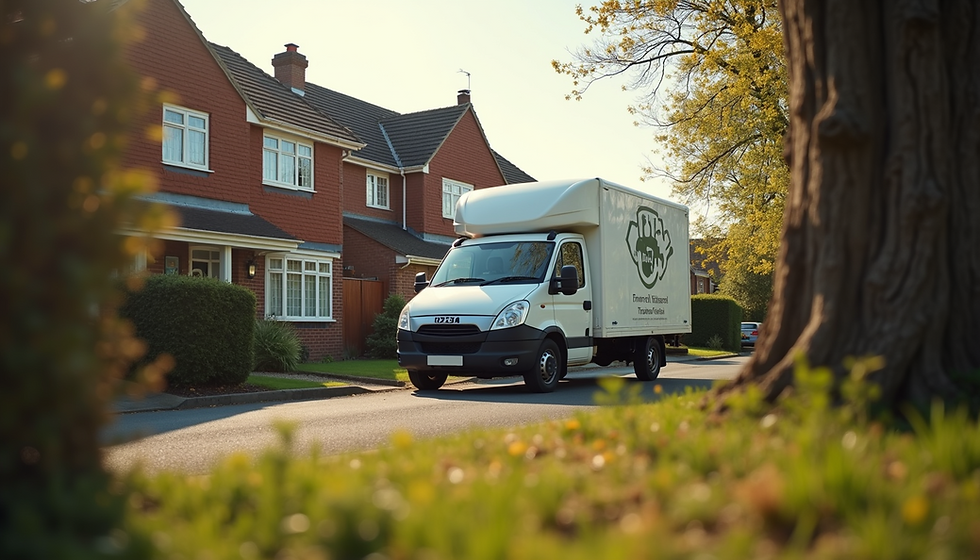Essential Tips for a Stress-Free Home Relocation
- tompatransport
- Oct 6
- 3 min read
Moving to a new home can be an exciting chapter, but it often comes with a fair share of stress. From packing to organising logistics, the process can feel overwhelming. However, with the right approach and preparation, you can make your home relocation smooth and hassle-free. This guide offers practical tips and strategies to help you manage every step of your move efficiently.
Planning Your Home Relocation Early
One of the most important steps to ensure a stress-free home relocation is to start planning well in advance. Early preparation allows you to organise tasks, avoid last-minute chaos, and reduce anxiety.
Create a timeline: Break down your moving process into manageable stages. For example, start by sorting and decluttering your belongings weeks before the move.
Set a budget: Moving can be costly. Allocate funds for packing materials, removal services, and any unexpected expenses.
Notify relevant parties: Inform your utility providers, postal service, and any subscriptions about your change of address early on.
By setting clear deadlines and goals, you can keep track of your progress and avoid rushing at the last minute.

Organising Your Home Relocation Efficiently
Efficient organisation is key to a smooth move. This involves packing smartly, labelling boxes, and coordinating with movers or helpers.
Declutter before packing: Sort your items into categories - keep, donate, sell, or discard. This reduces the volume you need to move and can save time and money.
Use quality packing materials: Invest in sturdy boxes, bubble wrap, and packing tape to protect your belongings.
Label boxes clearly: Mark each box with its contents and the room it belongs to. This makes unpacking easier and faster.
Prepare an essentials box: Pack a separate box with items you will need immediately after moving, such as toiletries, a change of clothes, and important documents.
For a comprehensive guide, consider using a house moving checklist to ensure you don’t miss any important steps.

Tips for Packing Fragile and Valuable Items
Packing delicate and valuable items requires extra care to prevent damage during transit. Here are some practical tips:
Wrap items individually: Use bubble wrap, packing paper, or soft cloths to wrap fragile items like glassware, ceramics, and electronics.
Use sturdy boxes: Choose smaller boxes for heavy or fragile items to avoid overpacking and reduce the risk of breakage.
Fill empty spaces: Use packing peanuts, crumpled paper, or towels to fill gaps inside boxes to prevent items from shifting.
Label as fragile: Clearly mark boxes containing delicate items to alert movers to handle them with care.
Keep valuables with you: Transport important documents, jewellery, and irreplaceable items personally rather than in the moving van.
Taking these precautions will help ensure your precious belongings arrive safely at your new home.

Managing Moving Day Smoothly
Moving day can be hectic, but with proper preparation, you can keep things under control.
Confirm arrangements: Double-check the booking with your removal company or helpers.
Keep important documents handy: Have your moving contract, inventory list, and contact numbers accessible.
Supervise the loading: Be present to guide movers on which items to load first and how to handle fragile goods.
Stay hydrated and take breaks: Moving is physically demanding, so remember to drink water and rest when needed.
Do a final walkthrough: Before leaving your old home, check all rooms, cupboards, and storage areas to ensure nothing is left behind.
By staying organised and calm, you can make moving day less stressful for everyone involved.
Settling Into Your New Home with Ease
Once you arrive at your new home, the work is not over. Settling in efficiently will help you feel comfortable and organised quickly.
Unpack essentials first: Start with the essentials box and set up your bedroom and bathroom to have a comfortable first night.
Arrange furniture strategically: Plan your furniture layout before unloading to avoid unnecessary moving around.
Connect utilities and services: Ensure electricity, water, internet, and heating are set up and functioning.
Explore your neighbourhood: Familiarise yourself with local shops, transport links, and amenities to feel at home.
Take your time: Unpacking and organising can be done gradually. Prioritise what you need and avoid rushing.
A well-planned settling-in process can turn your new house into a welcoming home quickly.
Moving home does not have to be a stressful experience. With careful planning, smart organisation, and practical tips, you can enjoy a smooth transition to your new place. Use resources like a house moving checklist to stay on track and make your home relocation a positive and exciting journey.






Comments